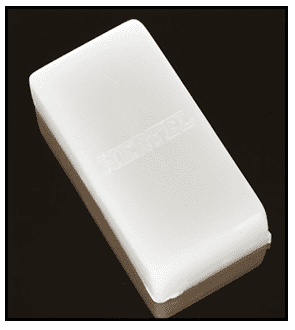How stimulating the full range of senses can affect consumer behaviour
Over the Summer, when we had a hot day and I was stuck on a commuter train I kept getting a whiff of somebody’s sun cream that has that coconut smell that instantly flooded my brain with thoughts of a summer holiday, sat on a beach, looking out to the horizon which takes my mind off being stuck on a commuter train.
This smell got me thinking about neuromarketing, which considers all the senses and their response to marketing stimuli. We focus so hard on what we can see, we forget about our other senses, touch, sounds, smell. As marketing is now integrated with multi touch points I wondered how many people are putting these in action?
In this post I would like to introduce and show learnings from the relatively new science- neuromarketing taken from the fantastic books by Martin Lindstrom.
What is neuromarketing?
Branding is not just about the logo, the name, the colour palate – although our branding does need to have a constant look and feel there is more to selling than that.
Neuromarketing is about looking at how our brain’s subconscious thoughts, feelings and desires drive our everyday purchase decisions. '90% of buying decisions are subconscious.'
Using fMRI and SST scans, as well as eye tracking techniques, brands have started to understand how we think and feel about campaigns and product. Even though most of us don’t have an fMRi scan hanging around the board room, you can start to understand what makes your customers tick and what can you do to push their buying behaviour.
Socrates and Somatic Markers
Socrates told his students that the mind is like a brick of wax –'on which we stamp what we perceive or conceive' we remember and know 'whatever is obliterated or cannot be impressed, we forget and do not know'

This is where the phrase 'make an impression' hails from
This is what brands needs to do, both on and offline, prior, during and after their experience. We need to create memories so strong that our customers become loyal advocates.
We all make our choices using cognitive and emotional processes so when you are faced with complex and conflicting choices we may be unable to decide using only our cognitive process, this is where somatic markers help us decides, they are the associations that can reoccur during the decision making process.
Creating memories
How do you look, what colours do you use, fonts, paper stock, the uniform your staff wear, how do you sound, how do you smell? Just in case you think I have lost my marbles here are some examples from Lindstrom's work where brands have used the senses to make a difference to the bottom line.
It may surprise you to learn that brands work very hard to create a consistent smell in their environment, not just so it smells fresh but to alter your subconscious. Anyone that has tried to sell a house was probably told to bake some bread and put on a pot of coffee.
Go into any Abercrombie & Fitch store and the clothes all smell the same, you walk past and get a whiff next time you are out. Studies showed that you could blind fold kids and put them in front of different jeans and they will pick out the Abercrombie pair, but this smell burns that somatic market into their heads, a brand experience is born.
Sony’s Flagship store pumps the smell of melon into it, turns out this is a tested and winning combination that has made customers stay calm and apparently buy more.
The Hyatt hotel chains spray lobbies and rooms in their own signature smell, so no matter which one you are in you are welcomed with their unique and familiar smell.
Have you ever been on the London Underground? In particular the Victoria Line? You may have noticed that they play classical music. They did a study back in 2006 that concluded that sound changed behaviour. When they played the music robberies dropped by 33%, assaults on staff dropped by 25% and vandalism dropped by 27%.

Super marketers filter in music with different temps to make us walk and shop quicker, or influence our buying.
Pump in French music to the wine section and sales of French wine will go up, do the same for German music, your German wine will sell.
What somatic markers can you create for your brand?
What I like about this topic is that you don’t have to be a huge brand with a huge budget to put some of this thinking into practice.
Have a think about your target audience, visit your personas, what will work as a hook and how can you get them to create stronger memories and impressions both on and offline, some discussion ideas:
- What music would work best on your company video?
- What colour would work best on your website?
- When you send out a direct mail campaign, would adding a texture make a difference?
- When you have a face to face experience what could you change to your environment?








